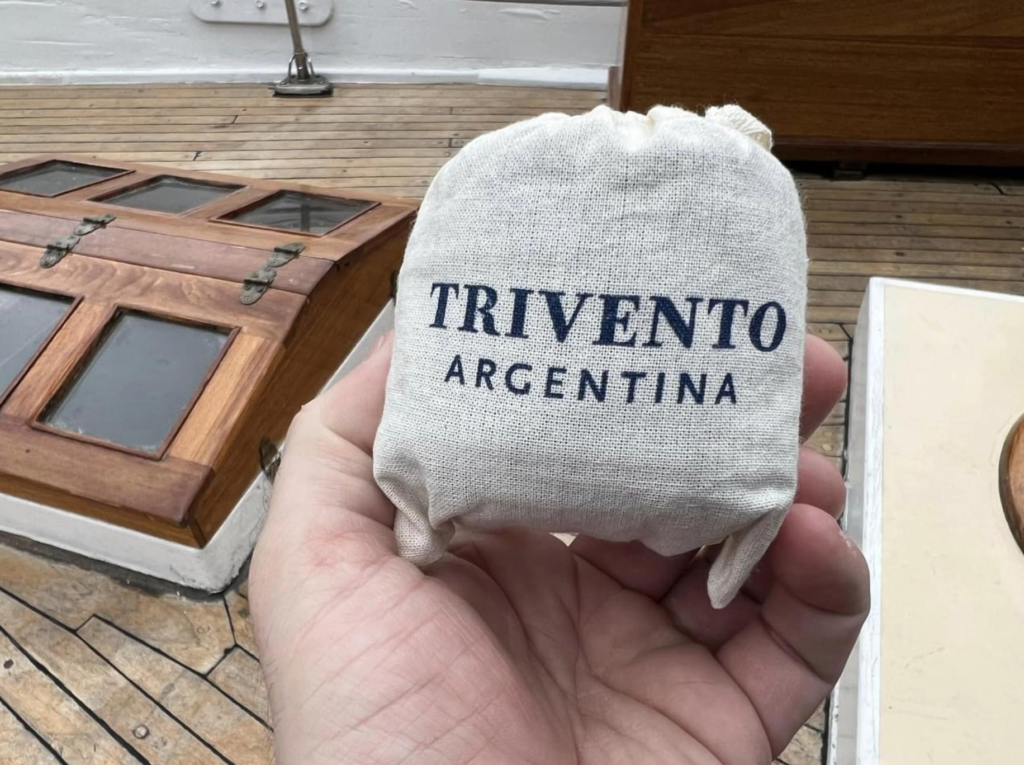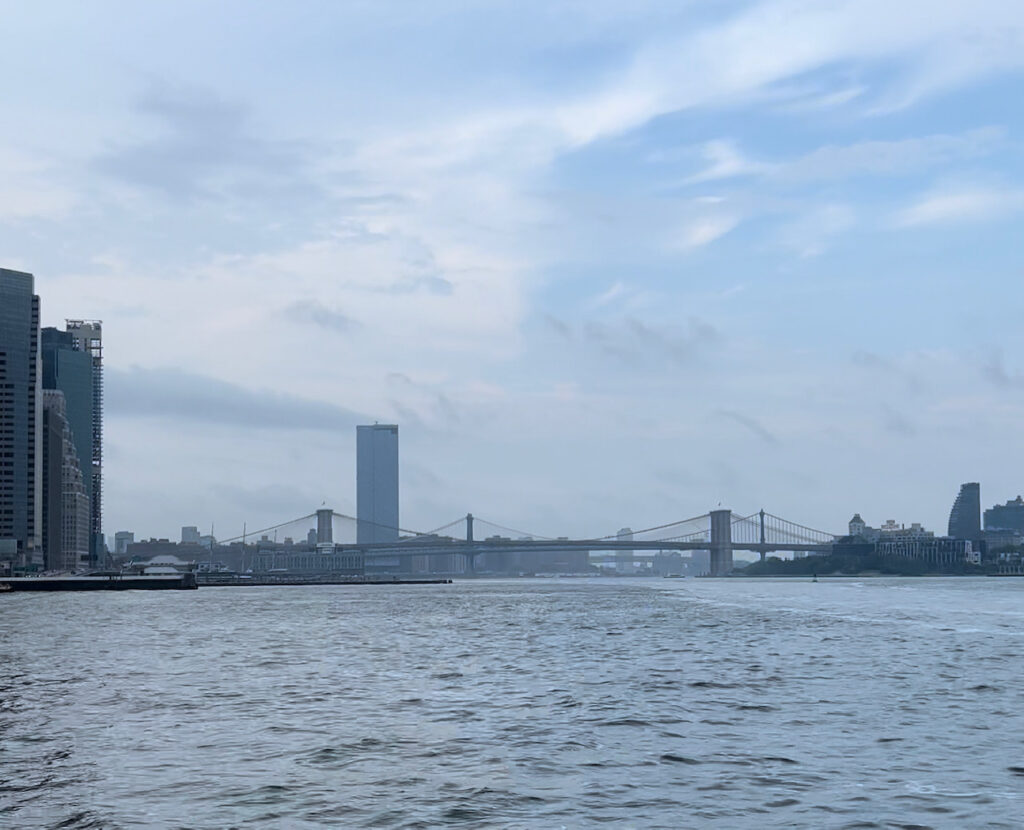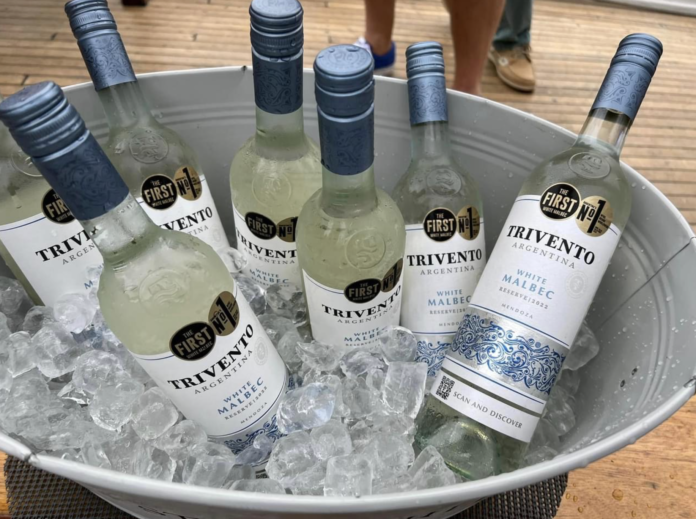DC Deserves Amazing Summertime wine! Trivento launches #TheFirstWhiteMalbec with Winemaker Maxi Ortiz
There’s plenty of “other” product launches and then there’s Trivento’s Sunset Cruise launch for The First White Malbec. Clearly, Trivento is very excited.

A handful of NYC and East Coast wine and food experts board a luxury yacht, built in 1919, at Manhattan’s North Cove Premier Mega-Yacht Club & Marina. On-board, best-selling wine authors, top wine media, and NYC’s food and wine critics.

As we set sail, our wine glasses are filled with The First White Malbec in the world, produced by Argentina’s Trivento and Winemaker Maxi Ortiz.

It’s easy to be taken by the moment. You look up and see the majestic NYC coastline. Look around the yacht, even the most local New York cynics have their jaws agape. It’s just breath-taking to see.

Moments later, the crew aboard the Ventura Sailing Team are passing out delicious seafood and chicken-based appetizers to pair with Trivento’s White Malbec.

We sail through the bay, passing the Brooklyn Bridge in the distance, coming up on Governor’s Island and of course, The Statue of Liberty.

Why Trivento’s White Malbec is a world-class Innovation
For over 150 years, Malbec has been grown widely throughout Argentina. Its deep purple color, rich aromas of plums and red berries. It’s perfect for smooth, supple red wines.
The fact that Winemaker Maxi Ortiz dares to take an incredible red wine and turn it into a white wine, shows world-class innovation, confidence and vinification prowess. But as we’ll learn further below, it wasn’t an easy process.
Ortiz later explains in detail, it took 4 years of trial and error. Getting closer and closer, but not perfect enough for him. What we taste today is a culmination of his efforts and lessons.
What does Trivento’s White Malbec taste like?
By now most of us on the yacht have had a second taste of the wine. It’s opening up and blossoming beautifully.
The color is surprisingly clear, crystalline.
The nose has aromas of white peach, grapefruit, subtle hint of red fruit.
It’s a very easy-drinking wine. Especially in the summer. The mouth has a refreshing acidity, light body. Notes of green apple. Pairs beautifully well with the seafood and light chicken dishes served here. I could also see it with a garden salad, caprese or sushi. Be daring and try it with BBQ as the acid will cut into the fatty meat.
Hearing from Trivento’s Team, Juan Jose Gil
Juan Jose Gil directs the Trivento brand in the United States.
He explains that Trivento was founded in 1996 by the group Concha y Toro. It was the first time they left Chile to make an investment outside of their origin when they chose Mendoza, Argentina.
They started with a very small vineyard of 154 hectares. Today these Malbec experts have 12 vineyards in four different valleys and over 1,764 hectares of vines. They offer Malbec at every price point and every value tier.
The company has three pillars: Innovation. Sustainability. Excellence.
From Juan Jose Gil’s explanation, all 3 pillars are thriving together as we sip their most innovative wine, from grapes farmed on their sustainable vineyards, enjoying its excellent quality.

Winemaker Maxi Ortiz Reveals His White Malbec Process
Ortiz has been working at Trivento since 2006, helping to build it into the fourth biggest winery in Mendoza.
2019 was their first vintage of Trivento White Malbec. But it’s come a long way from what the world is tasting today.
However, for him, it’s a very special wine for more that just the innovation it represents, but also a positive impact on society:
“Sales from this wine
go to a scholarship program that helps students
with low economic resources and high academic performance to finish schooling.”
How did he create the white Malbec?
He revealed parts of his 4-year process. He picked the grapes the last week of January, 40 days earlier than regular. Then they quickly pressed the grapes in order to separate the skin from the pulp. However it’s not “white” yet. Then it was more of a rose.
Then he revealed the biggest secret of the process. A winemaking method that is common with red wines, but not whites. Ortiz got creative, invented and daring – and it worked. And unfortunately, we’re not going to share it here today. As competition is already growing!
“We were the first winery [back in 2019] to make a white wine with a red grape, which is the Malbec.
And it’s fantastic because nowadays you can see at least 10 different wineries making White Malbec.
So this is the first White Malbec and
in a way Trivento creates a new category of wine in Argentina.”
The quality is clearly there, As Ortiz explains further:
“The grapes came from the same region, from the same vineyard,
from the same places that we use for our [traditional Malbec] Reserve.”
For those who follow NYC weather, it was supposed to be thunderstorms the day of the Sunset Cruise. Bravely and happily, the launch decided to move forward anyway!

The weather was dramatic and cloudy (but dry) all throughout the cruise. Then, as if anointed by a higher power, just as Ortiz finished speaking, the rain started.
A slow, steady rinse that grew stronger. By the time we returned to dock, it was a heavy downpour. But no one was complaining. Wet smiles all around.
If Trivento White Malbec has a way of brightening your day even amidst a heavy thunderstorm, imagine what it can do for your backyard barbecue?
Find more on the Trivento website
Follow Trivento on Facebook and Instagram.



